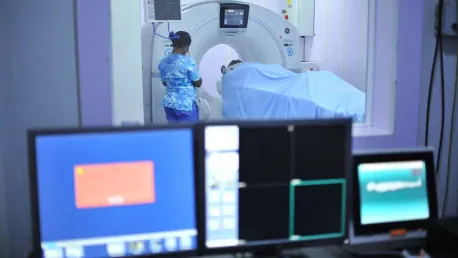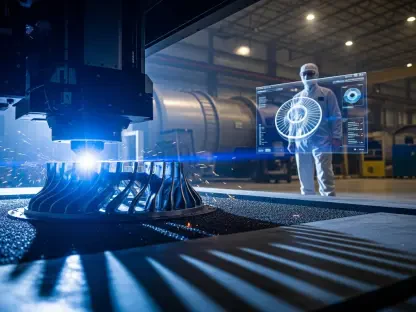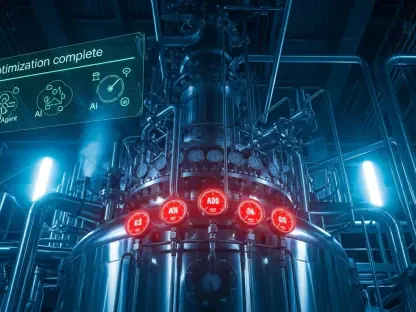In the year 2025, the landscape of the medical device manufacturing industry witnessed remarkable transformations driven by numerous mergers and acquisitions (M&A). These strategic moves reflect a deeper trend within the industry—consolidation among suppliers and original equipment manufacturers (OEMs). As companies seek to bolster their technological capabilities, expand their market presence, diversify their offerings, and enhance cost efficiencies, staying abreast of these developments is essential for stakeholders aiming to understand this rapidly evolving market. This article delves into the significant M&A transactions and the overarching trends shaping the medical device sector.
Technological Advancements Driving M&A
Enhancing Technological Capabilities
Many acquisitions in 2025 aimed at enhancing companies’ technological prowess, providing a clear insight into the industry’s focus on staying at the cutting edge of medical innovation. Medical Manufacturing Technologies (MMT) made notable strides by acquiring GenX Medical, a move strategized to bolster its extrusion capabilities. This acquisition not only allowed MMT to integrate advanced extrusion solutions into its portfolio but also underscored a broader industry trend toward the pursuit of specialized technologies.
Enhancing technological capabilities through M&A has become a cornerstone strategy for many companies looking to maintain their competitive edge. By integrating state-of-the-art technologies, firms are better equipped to meet the intricate demands of the healthcare sector. Such acquisitions facilitate the introduction of innovative medical devices capable of addressing complex patient needs, ensuring that companies remain at the forefront of medical advancements.
Proprietary Technology Acquisitions
The acquisition of Vectura by Phillips Medisize is a prime example of how companies are focusing on proprietary technologies to differentiate themselves in the competitive medical device market. Vectura’s specialization in dry powder inhalers (DPI) provided Phillips Medisize with a unique technological advantage, allowing it to offer sophisticated respiratory care solutions. This move highlights the industry’s intent to incorporate cutting-edge technologies that can deliver significant clinical benefits.
By securing proprietary technologies through acquisitions, companies can enhance their R&D capabilities and shorten the time to market for new products. This strategic approach not only provides a competitive advantage but also meets the evolving medical needs in innovative ways. Integrating such advanced technologies into existing product lines can unlock new therapeutic possibilities, positioning firms as leaders in providing high-quality medical devices.
Geographic Expansion Strategies
Expanding Market Reach
Geographic expansion emerged as a critical theme in the 2025 M&A activities, as companies sought to capitalize on untapped markets. Arterex’s acquisition of Phoenix S.r.l., an esteemed Italian-based manufacturer, enabled Arterex to extend its footprint in Europe. This strategic acquisition allowed Arterex to enhance its market access and leverage local distribution channels, thus optimizing logistics and customer reach.
Expanding market reach through acquisitions is an effective strategy to mitigate the risks associated with entering new geographical regions. By acquiring established companies with a loyal customer base and robust supply chains, firms can navigate regional market intricacies more effectively. This approach not only broadens the customer base but also strengthens the company’s position within key markets, facilitating sustainable growth.
Strengthening Regional Presence
Another noteworthy trend observed in 2025 was the intention to strengthen regional presence through targeted acquisitions. Cormica’s acquisition of Focus Laboratories, which has operational facilities in Pennsylvania and Florida, underscores this strategy. By acquiring such regional powerhouses, Cormica bolstered its production and distribution capabilities, ensuring better market penetration stateside.
Strengthening regional presence is vital for companies aiming to enhance customer service and streamline their supply chains. By localizing production, firms can reduce lead times, ensure compliance with local regulations, and tailor their offerings to regional market preferences. This strategic move not only fosters customer loyalty but also establishes a firm’s commitment to serving regional markets proficiently.
Diversification of Offerings
Expanding Service Portfolios
In 2025, companies pursued diversification to broaden their service and product portfolios, reflecting a keen focus on offering comprehensive solutions. Integer Holdings exemplified this trend with its acquisition of Precision Coating. By integrating differentiated and proprietary coatings into its portfolio, Integer enhanced its value proposition, offering customers a broader range of solutions tailored to specific medical needs.
Expanding service portfolios through strategic acquisitions enables companies to cater to a wider array of customer requirements. This diversification mitigates risks associated with market fluctuations and establishes a strong foundation for sustained growth. Combining unique capabilities from acquired companies, firms can deliver holistic solutions that address diverse aspects of medical device manufacturing and patient care.
Comprehensive Solutions
Jabil Inc.’s acquisition of Pharmaceutics International Inc. (Pii) is another significant transaction emphasizing the industry’s move toward offering comprehensive solutions. This acquisition provided Jabil with advanced capabilities in aseptic filling, lyophilization, and oral solid dose manufacturing. By integrating these specialized services, Jabil can deliver more comprehensive solutions, addressing a wider spectrum of healthcare manufacturing needs.
Offering comprehensive solutions is integral to maintaining competitiveness in a dynamic market. By encompassing various specialized services, companies can position themselves as one-stop providers for medical device manufacturing. This approach not only improves customer satisfaction but also fosters long-term partnerships, as clients are more likely to rely on a single provider for multiple production needs.
Cost-Effective Production Alternatives
Leveraging Existing Capabilities
In the pursuit of cost-effective solutions, companies in the medical device industry explored alternatives that leverage existing capabilities. Arterex’s acquisition of Adroit USA Inc. exemplifies this trend. Arterex aimed to utilize Adroit’s existing high-tech capabilities as a cost-effective alternative to Chinese production, allowing them to achieve rapid scale without significant capital investments in new facilities.
Leveraging existing capabilities through acquisitions is a strategic move to enhance cost-efficiency while maintaining high production standards. Such acquisitions facilitate quick scaling, allowing companies to meet demand without enduring the prolonged setup times associated with building new manufacturing units. This approach not only optimizes resources but also ensures timely delivery and competitive pricing, essential for staying ahead in the market.
Operational Synergies
Achieving operational synergies was a prominent theme in the 2025 M&A activities. Companies sought to streamline their operations by integrating acquired entities, which helped reduce redundancies and optimize resource utilization. Through strategic mergers, firms could achieve significant cost savings and enhance overall efficiency, ultimately providing more value to customers.
Operational synergies derived from mergers enable companies to consolidate their operations, streamline processes, and boost productivity. By combining complementary assets and capabilities, firms can reduce operational costs and improve service delivery. This strategic consolidation not only fosters a more efficient business model but also strengthens the company’s competitive position, driving long-term success.
Consolidation for Competitiveness
Staying Relevant in a Fast-Paced Market
In a fast-paced and highly competitive market, consolidation emerged as a vital strategy for maintaining relevance. By merging with or acquiring specialized firms, companies could harness new technologies, markets, and customer segments, ensuring they remained competitive. This trend was evident across multiple transactions in 2025, where firms aimed to combine strengths and resources to stay ahead of the curve.
Staying relevant in a rapidly evolving industry requires agility and innovative capabilities. Through consolidation, companies can pool their expertise and resources, fostering an environment of continuous improvement and innovation. This strategic approach not only enhances competitiveness but also ensures that firms can swiftly adapt to market changes and emerging trends.
Building Comprehensive Solutions
Each transaction in 2025 carried a strategic rationale aimed at building comprehensive solutions and achieving operational synergies. By combining capabilities, companies could access new technologies, penetrate new regions, and augment their service portfolios. This proactive rationalization was crucial for firms looking to enhance their market position and drive growth.
Building comprehensive solutions through strategic M&A activities enables companies to offer more value to their clients. By integrating a diverse range of services and technologies, firms can address various customer needs under one roof. This holistic approach not only strengthens customer relationships but also creates new business opportunities, fostering sustainable growth and market leadership.
Investment in Innovation
Cutting-Edge Solutions
A significant focus on investing in innovative products and services was evident in the 2025 M&A activities. Boston Scientific’s acquisition of Bolt Medical’s IVL laser-based platform for artery disease treatment is a prime example. This acquisition reflects the industry’s push toward cutting-edge solutions that can effectively meet medical needs and offer advanced treatment options.
Investing in cutting-edge solutions through acquisitions is instrumental for companies aiming to deliver state-of-the-art medical devices. This strategic focus on innovation ensures that firms remain at the forefront of technological advancements, providing high-quality, effective healthcare solutions. By continuously exploring and integrating new technologies, companies can maintain their competitive edge and meet evolving patient needs.
Meeting Evolving Medical Needs
By the year 2025, the landscape of the medical device manufacturing industry had undergone significant changes, marked by a series of mergers and acquisitions (M&A). These strategic actions signal a broader trend in the industry: a move towards consolidation among suppliers and original equipment manufacturers (OEMs). Companies pursue these M&As to increase their technological prowess, broaden market reach, diversify product lines, and improve cost efficiencies. Stakeholders who want to keep up with this fast-changing market must pay close attention to these shifts. This article explores the noteworthy M&A activities and the overarching trends that are currently shaping the medical device industry. Understanding these dynamics is crucial for anyone looking to navigate this evolving sector, as consolidation can lead to more innovative products and potentially lower costs for healthcare providers and patients alike. This trend underscores the importance of strategic positioning in the industry, revealing how businesses are adapting to new challenges and opportunities to maintain a competitive edge.









